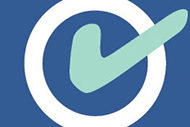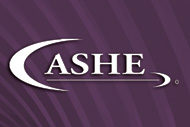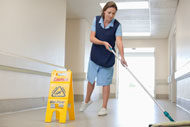As first stated on this page in January, the ASHE Advocacy Committee is collecting information on health facility codes, regulations and standards that are creating unnecessary financial burdens on the nation's health care organizations.
Through its code reform initiative, ASHE intends to work to change these requirements to eliminate or ease costs but still maintain high-quality health care built environments. However, action cannot be taken without data to support such efforts.
This is where health facility professionals come in. ASHE members and others are invited to contribute their experiences to help focus ASHE's code reform efforts. They may submit their material anonymously, using the portal on the Code Reform page under the Advocacy tab on the ASHE website at www.ashe.org.
Following are three examples of information that have been submitted to date:
• Electrical outlets. During a Centers for Medicare & Medicaid Services (CMS) inspection, a health care facility was cited for not having additional receptacles for infants who "room in" with their mothers. Hospital policy is that infants with a condition that would require any medical or other equipment (e.g., temperature control, need for monitoring, etc.) are taken to the nursery, where appropriate electrical outlets are available. CMS stated that having the infant in the room constitutes an additional "patient bed location," which requires receptacles from at least two branch circuits (normal and emergency).
• Surgical room cabinet sprinklers. A citation issued in 2010 by a state fire marshal surveying for CMS mandated either installation of automatic sprinkler heads in all wall-mounted operating room supply storage cabinets or drilling of holes in the tops of the cabinets to permit sprinkler water to reach their contents. The fire marshal did not provide a specific code citation in the final report.
• Hospital-grade electrical appliances. A number of facility managers have reported that CMS surveyors are citing them if all electrical equipment in the hospital, including microwave ovens and toasters, are not listed as "hospital grade." This means that use of high-end, household-style products are not permitted anywhere in a health care facility, including employee break rooms. The surveyors asked the facilities to remove all nonhospital-grade microwaves from service and replace them with appropriately designated hospital-grade microwaves. No hospital-grade microwaves or toasters are available on the market.
The ASHE strategic plan includes working within the political process to achieve the goal of one health care facility code and eventually one level of enforcing authority for our nation's hospitals. Please take a moment to share your organization's experiences or to make suggestions for issues ASHE should examine.
This month's column was written by Chad E. Beebe, AIA, CHFM, CFPS, CBO, associate director, advocacy, for ASHE.
ASHE Insight
Resources available
ASHE offers a number of valuable resources at special prices to professionals in the health care industry.
They include the following:
- Health Facility Commissioning Guidelines. Written by health care professionals, this resource helps optimize construction or renovation delivery. It enables project teams to deliver cost-effective and efficient health care facilities that yield the desired return on investment. The guidelines can help ensure a sucÂcessful transition from construction completion to a sustainable, high-performance operation.
- Guidelines for Design and Construction of Health Care Facilities. The 2010 guidelines cover minimum program, space and design needs for all clinical and support areas of hospitals, nursing facilities, freestanding psychiatric facilities, outpatient and rehabilitation facilities, and long-term care facilities. It also includes new material on acoustics, patient handling and movement, patient safety, bariatric patient care, cancer treatment and emergency services.
For information on purchasing either of these valuable references, click here.





